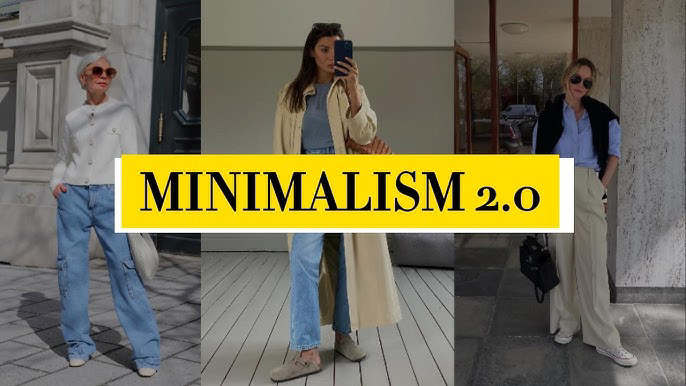Minimalism 2.0: The Lifestyle Trend That’s Taking Over Social Media
Minimalism isn’t new. For years, we’ve seen white walls, capsule wardrobes, and decluttered desks flood our feeds. But lately, something’s changed. There’s a new wave — a kind of evolved minimalism — that feels more personal, more intentional, and surprisingly… vibrant. They’re calling it Minimalism 2.0. And honestly? I’m here for it.
When I first discovered minimalism, I thought it was all about throwing things away. Donate half your clothes. Sell your car. Eat from one plate. Live with as little as possible. But the more I explored it, the more it started to feel rigid — almost performative. I’d scroll past perfect pantries, colorless rooms, and people bragging about how few items they owned, and I’d wonder: Is this really what minimalism is supposed to be?
Turns out, Minimalism 2.0 says: not quite.
This new version of minimalism isn’t about living with less for the sake of it — it’s about living with only what truly matters to you. It’s not about beige walls unless you love beige. It’s not about one pair of shoes unless those shoes bring you confidence and comfort. Minimalism 2.0 is more emotional, more mindful, and deeply connected to your values. It’s less “get rid of stuff” and more “make space for what fills you up.”
And social media? It’s eating it up.
If you’re scrolling through Instagram, TikTok, or YouTube these days, you’ll notice something. Content creators are still decluttering, sure — but they’re also talking about mental clarity, sustainable living, slow fashion, digital detoxing, and emotional boundaries. Minimalism 2.0 is being rebranded as a tool for intentional living — a way to quiet the noise and focus on the things that actually make life better.
Instead of flexing “how little I have,” people are now celebrating “how well I live.” Think earthy tones mixed with bold pops of color, minimal skincare routines that still prioritize self-care, and thoughtfully designed spaces that tell a personal story. The aesthetic is still clean and calm — but it’s warmer, more human.
What I love about this shift is that it makes minimalism more accessible. You don’t have to follow a strict rulebook. You don’t have to give up everything. You just have to pause and ask: Is this helping me live better? Or is it just more noise?
Minimalism 2.0 also resonates more deeply in our current world — one where we’re constantly overstimulated by content, ads, and notifications. In a time of information overload, this lifestyle isn’t just a trend — it’s a form of self-preservation. A way to breathe again.
It’s no wonder the movement is gaining traction, especially among Gen Z and Millennials. In a world that tells us to want more, buy more, and be more — Minimalism 2.0 tells us to slow down, let go, and just be. It’s not about perfection. It’s about peace.
So whether you’re thinking of decluttering your closet, simplifying your digital life, or just saying “no” more often — welcome to the club. Minimalism 2.0 isn’t a finish line. It’s a journey. And it starts with asking yourself one simple question: What truly matters to me?





This was a fascinating read. Minimalism 2.0 feels like a natural evolution of the original concept—less about strict decluttering and more about intentional living in all areas of life. It’s interesting to see how social media is helping redefine what minimalism means for a new generation. Looking forward to seeing how this trend continues to influence design, lifestyle, and even digital consumption habits.
ReplyDelete